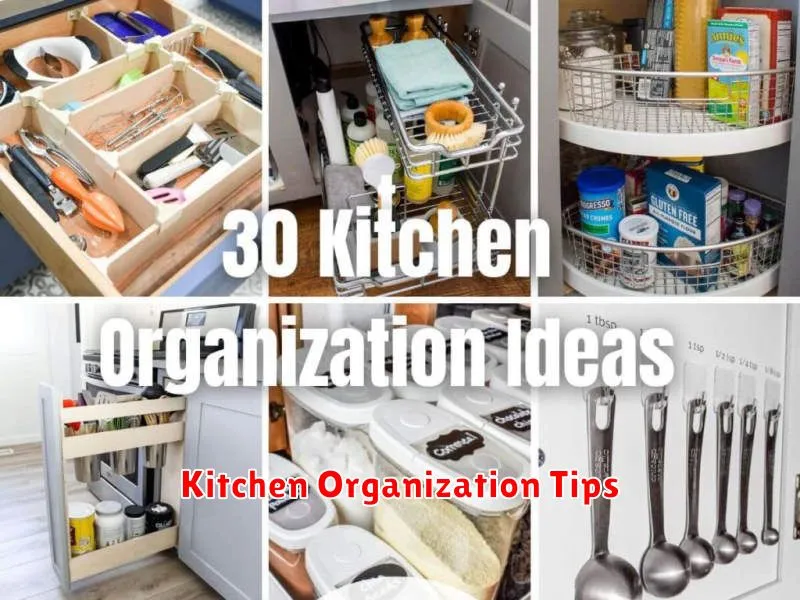Is your kitchen overflowing with cookware, appliances, and food items? A cluttered kitchen can feel overwhelming and inefficient. This article presents 10 innovative storage ideas to help you achieve a well-organized kitchen. Learn how to maximize your kitchen storage space, whether you have a small galley kitchen or a spacious chef’s kitchen, using clever solutions to conquer kitchen clutter and create a functional, aesthetically pleasing environment. Discover effective strategies to efficiently store everything from pots and pans to spices and food, transforming your kitchen into a haven of organization and efficiency.
Pull-Out Pantry Shelves
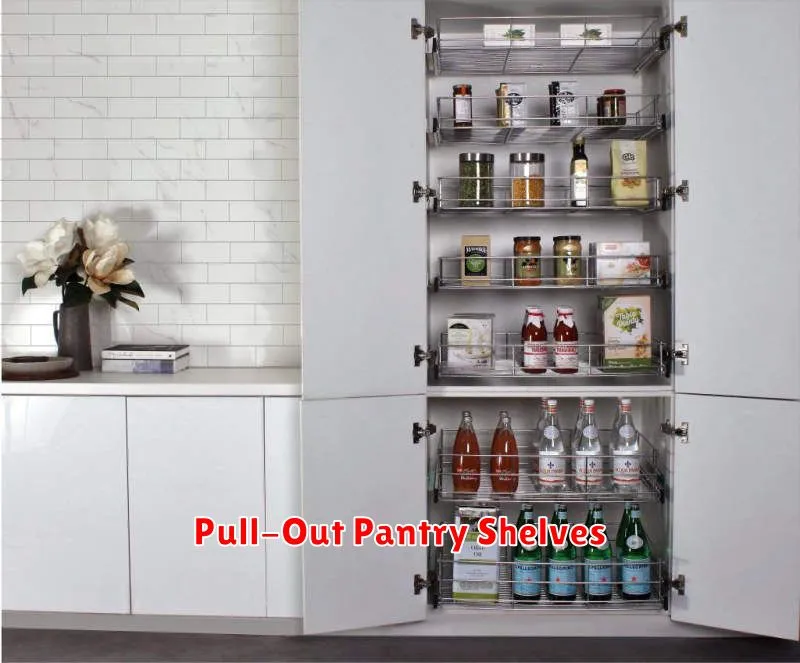
Pull-out pantry shelves represent a significant upgrade for kitchen organization and accessibility. They transform often-cluttered and hard-to-reach pantry spaces into efficient, user-friendly storage solutions. This is achieved by allowing for the complete extension of shelves, bringing items directly within reach.
The benefits are numerous. Improved accessibility is paramount, particularly for individuals with mobility limitations or those storing heavier items at the back of the pantry. Increased visibility of stored goods minimizes waste by allowing for easy identification of expiring items. The design also facilitates better organization, with shelves easily customizable to accommodate various containers and sizes.
Installation can vary in complexity depending on the existing pantry structure and the type of pull-out system chosen. Some systems are designed for simple DIY installation, while others may require professional assistance. Material selection is crucial, with options ranging from sturdy wood to durable metal, each offering varying levels of durability and aesthetics. Consider factors like weight capacity and overall kitchen design when making a selection.
Cost is a factor to consider, with prices varying based on the size, material, and complexity of the pull-out system. However, the long-term benefits in terms of improved organization, reduced waste, and enhanced accessibility often outweigh the initial investment. Investing in quality hardware is also recommended to ensure smooth operation and longevity.
In conclusion, pull-out pantry shelves offer a practical and stylish solution for maximizing pantry space and enhancing kitchen functionality. Careful consideration of installation, material selection, and cost will lead to a successful upgrade that transforms a frustrating space into an efficient and enjoyable area.
Hanging Pot Racks
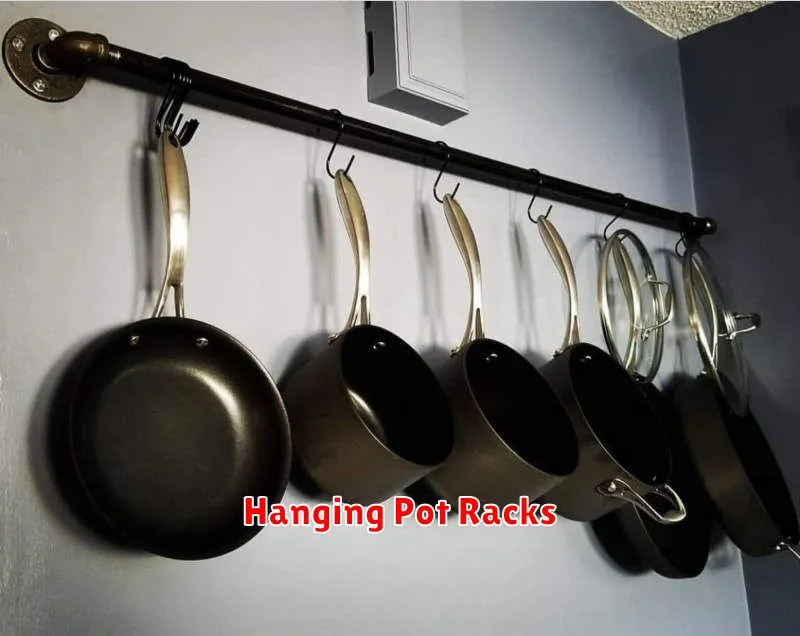
Hanging pot racks offer a stylish and practical solution for kitchen storage. They provide a readily accessible way to store pots, pans, and other cookware, freeing up valuable cabinet space and countertop area.
One of the primary advantages of a hanging pot rack is its space-saving capabilities. Unlike bulky cabinets, these racks utilize vertical space, making them ideal for smaller kitchens or those seeking to maximize efficiency. This is particularly beneficial in apartments or homes where kitchen space is at a premium.
Furthermore, the aesthetic appeal of a hanging pot rack should not be overlooked. They can add a touch of rustic charm or modern elegance to a kitchen, depending on the design and materials used. The visible cookware can become a decorative element, showcasing the owner’s style and culinary tools.
The installation process varies depending on the specific rack design. Some models require ceiling mounting, while others can be attached to a wall or even a kitchen island. It’s crucial to carefully assess weight capacity and the structural integrity of the chosen mounting point before installation.
However, there are some potential disadvantages to consider. Hanging pot racks can be more expensive than other storage solutions. Additionally, they require careful consideration of placement to ensure easy access and prevent accidental collisions with the cookware. The potential for noise from clanking pots and pans must also be considered.
In conclusion, hanging pot racks offer a unique blend of functionality and style. While they require careful planning and installation, the benefits of increased storage space and enhanced kitchen aesthetics often outweigh the drawbacks. Weighing the pros and cons carefully is essential before making a purchasing decision.
Magnetic Knife Strips
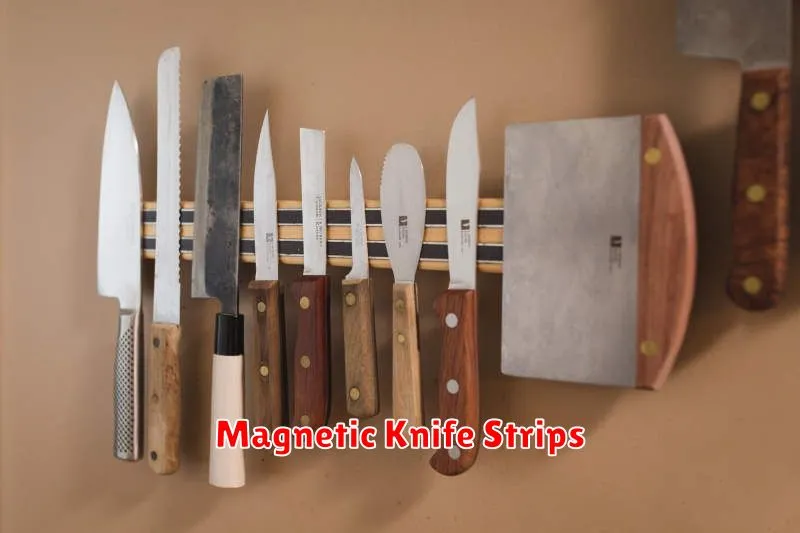
Magnetic knife strips offer a convenient and space-saving solution for storing knives in a kitchen. They provide easy access to frequently used cutlery, keeping them readily available while also enhancing the overall aesthetic appeal of the kitchen.
One of the primary advantages of magnetic knife strips is their ability to keep knives organized and within easy reach. Unlike bulky knife blocks, they eliminate the need to search for the right knife, resulting in improved efficiency during meal preparation. The magnetic force securely holds knives in place, preventing them from shifting or falling.
Furthermore, magnetic knife strips contribute to a cleaner and more organized kitchen workspace. They prevent knives from cluttering drawers or countertops, maximizing valuable space. This streamlined organization can minimize the risk of accidental cuts and injuries by keeping knives readily visible and accessible.
However, it’s crucial to consider certain limitations. The strength of the magnetic field can vary between different products. It’s important to choose a strip with a strong enough magnetic force to securely hold all your knives, especially heavier ones. Additionally, proper cleaning and maintenance are necessary to ensure longevity and prevent damage to the knives and the magnetic strip itself.
Safety is another crucial factor to consider. Magnetic knife strips should be mounted out of reach of children to prevent accidents. The sharp blades should always be handled with caution, regardless of the storage method. Regular inspection of the magnetic strip’s condition is also essential to ensure continued functionality and safety.
In conclusion, magnetic knife strips present a compelling option for knife storage due to their convenience, space-saving design, and aesthetic appeal. However, careful consideration of the magnetic strength, safety precautions, and regular maintenance are crucial for optimal usage and safety.
Spice Rack Drawers
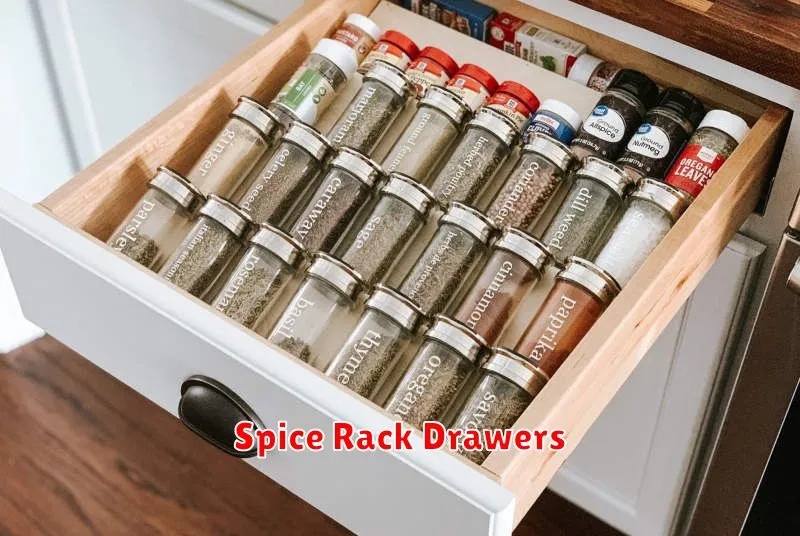
Spice rack drawers offer a convenient and space-saving solution for organizing your spice collection. Unlike traditional spice racks that often take up valuable counter or cabinet space, drawers allow for efficient storage and easy accessibility. They are a popular choice for both home cooks and professional chefs.
One of the key advantages of using spice rack drawers is their ability to maximize storage space. Drawers can be installed in various locations, including under cabinets, within pantry units, or even as standalone units. This allows for the efficient use of often-underutilized areas.
The organization offered by spice drawers is another significant benefit. Unlike jars haphazardly placed on shelves, drawers provide a structured system for storing spices. This system promotes easy location and retrieval of spices, improving efficiency in the kitchen. Many drawers also come with dividers or customizable inserts to further refine organization.
Accessibility is improved significantly with spice drawers. The drawer format allows for a clear view of all spices at once, eliminating the need to search through cluttered shelves. This is especially beneficial for those with limited mobility or reaching difficulties.
Durability is a crucial consideration when choosing a spice rack drawer. Options range from simple wood drawers to more robust metal or plastic models. The choice depends on individual needs and preferences; however, a sturdy design ensures long-lasting performance.
Finally, the aesthetic appeal of spice rack drawers should not be overlooked. They contribute to a cleaner, more organized look in the kitchen, enhancing the overall visual appeal of the space. Many different styles and finishes are available to complement existing kitchen décor.
Dividers for Utensil Drawers
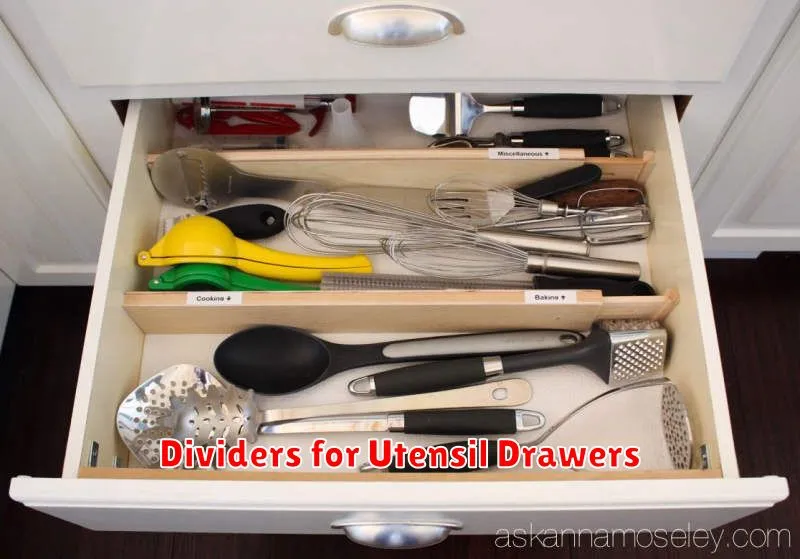
Utensil drawer dividers are a simple yet effective way to organize your kitchen drawers and improve efficiency. They transform a chaotic jumble of spoons, forks, and knives into a neatly arranged and easily accessible set of tools.
The benefits are numerous. Firstly, finding the utensil you need becomes significantly quicker and easier. No more rummaging through a drawer filled with randomly placed items. Secondly, organization leads to a cleaner and more aesthetically pleasing kitchen. A well-organized drawer contributes to a sense of calm and order in your workspace.
There’s a wide variety of materials available, from bamboo and wood to plastic and metal. Consider the style of your kitchen and your personal preferences when choosing a material. Durability and cleanability are also important factors to keep in mind. Some dividers are adjustable, allowing you to customize the compartments to perfectly fit your specific utensil collection.
Installing utensil drawer dividers is typically straightforward. Many are designed to simply slide into place, requiring no tools or special installation techniques. However, always refer to the manufacturer’s instructions for specific guidance.
Investing in quality utensil drawer dividers is a worthwhile endeavor. The improved organization, increased efficiency, and enhanced aesthetic appeal they provide far outweigh the initial cost. They’re a small change that can make a big difference in your daily kitchen routine.
Stackable Containers for Dry Goods
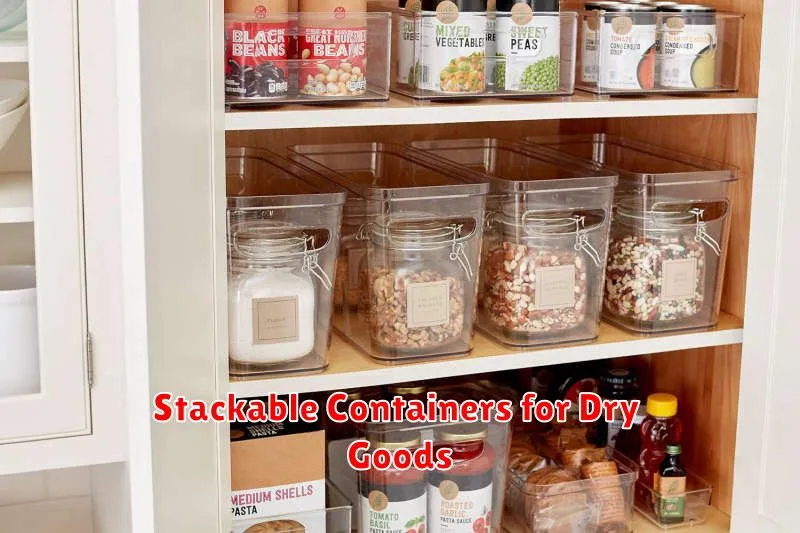
Stackable containers offer a practical and efficient solution for storing a wide variety of dry goods. Their design allows for maximized vertical space utilization, making them ideal for pantries, kitchens, garages, or any area with limited storage.
One of the key benefits of stackable containers is their ability to keep food fresh for longer periods. Airtight seals prevent moisture and pests from compromising the quality of your stored items. This is especially important for grains, beans, flours, and other dry ingredients susceptible to spoilage.
Beyond food storage, these containers are versatile enough for a range of other dry goods. They are perfect for organizing crafts supplies, small parts, tools, and various household items. Their clear design often allows for easy identification of contents, eliminating the need for time-consuming searches.
Material options for stackable containers vary, with plastic being a popular choice due to its durability, affordability, and ease of cleaning. Some higher-end options utilize glass or stainless steel for enhanced aesthetics and potentially longer lifespan. Consider your specific needs and budget when choosing the appropriate material.
When selecting stackable containers, consider factors such as size and capacity. Choose sizes that are appropriate for the items you plan to store and the available space in your storage area. Look for features such as handles or lids that snap securely for convenient handling and secure stacking.
Investing in high-quality stackable containers represents a worthwhile investment for anyone looking to improve their organizational skills and maximize storage space. Their benefits extend beyond mere convenience; they contribute to a more efficient and well-organized environment.
Under-Sink Organizers
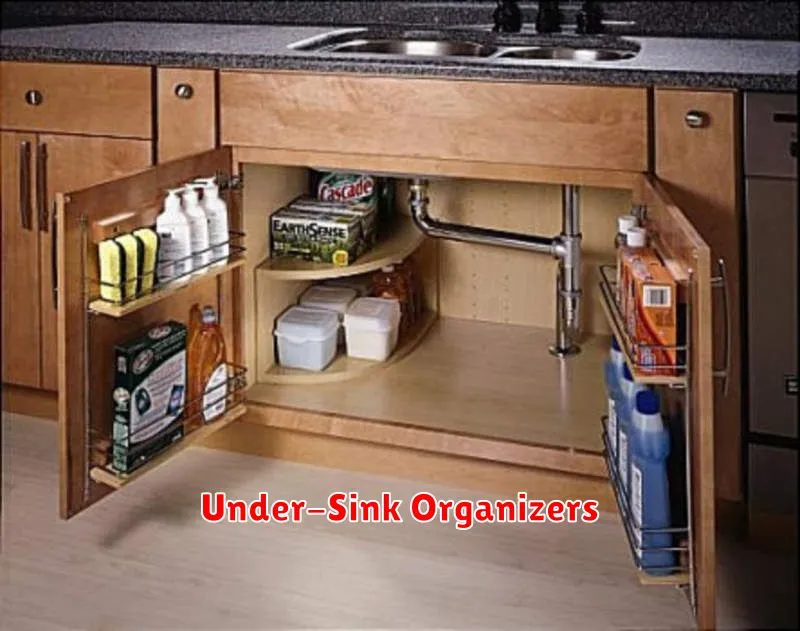
Maximize your under-sink storage space with clever organization solutions. A cluttered cabinet can quickly become a frustrating obstacle, but with the right tools and techniques, you can transform it into a well-organized and easily accessible area.
Utilizing vertical space is key. Consider using tiered trays, stackable containers, and slim-profile organizers to make the most of the height available. This helps prevent items from getting lost in the back of the cabinet and keeps everything within easy reach.
Categorize your items for efficient retrieval. Group similar items together – cleaning supplies, toiletries, extra sponges, etc. – in designated containers. Labeling these containers can significantly improve organization and speed up the cleaning process.
Choose the right materials for your under-sink organizers. Opt for waterproof and durable materials like plastic or coated metal to withstand spills and moisture. Avoid materials that can be easily damaged by cleaning products.
Regular maintenance is crucial. Periodically check your under-sink area for expired products, leaks, and clutter. Discard anything unnecessary and rearrange items as needed to maintain optimal organization. A clean and organized under-sink space contributes to a more efficient and enjoyable kitchen or bathroom experience.
Investing in quality under-sink organizers is a worthwhile investment for any home. By following these simple tips, you can create a functional and organized space that will save you time and frustration for years to come. The increased efficiency and ease of cleaning will undoubtedly be worth the effort.
Vertical Storage for Cutting Boards
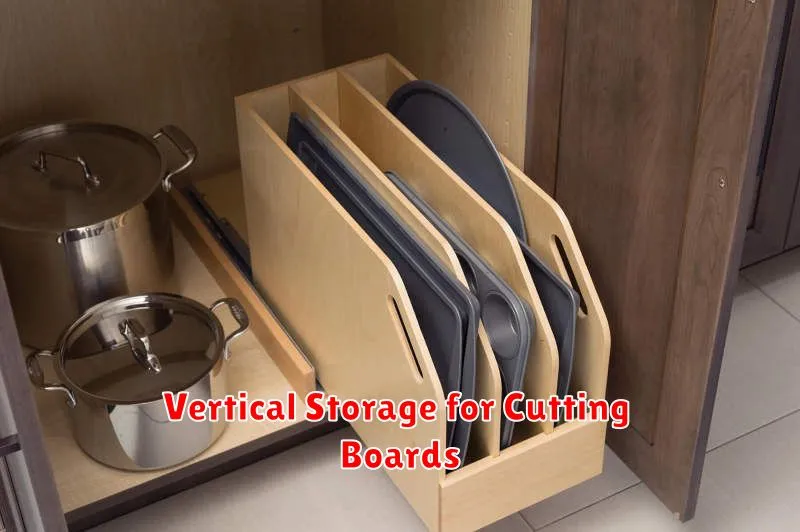
Tired of cluttered countertops and drawers overflowing with cutting boards? Vertical storage is the solution you’ve been searching for! This space-saving method maximizes your kitchen’s storage capacity while keeping your cutting boards readily accessible and organized.
There are several effective ways to implement vertical cutting board storage. One popular option involves using a wall-mounted rack. These racks can be purchased or easily DIYed, offering a stylish and efficient way to store your boards upright. This keeps them clean, dry, and prevents warping.
Another excellent method is utilizing a drawer divider system. By installing dividers within a drawer, you can create dedicated slots for each cutting board, preventing them from sliding around and getting damaged. This is a particularly effective solution if you prefer to keep your cutting boards out of sight.
For those with limited counter or drawer space, consider a freestanding cutting board holder. These holders are often designed to stand on the countertop, providing easy access and neat organization. They come in various materials and styles, allowing you to find the perfect match for your kitchen aesthetic.
Regardless of the method you choose, vertical storage offers significant advantages over traditional methods. It not only saves space but also improves hygiene by allowing air to circulate around each cutting board, preventing the growth of bacteria and mold. Plus, it presents a more visually appealing and organized kitchen space.
Investing in vertical storage for your cutting boards is a simple yet highly effective way to enhance your kitchen’s functionality and organization. So, say goodbye to the frustration of searching for that perfect board and hello to a more streamlined and efficient culinary workspace!
Overhead Shelves for Rarely Used Items
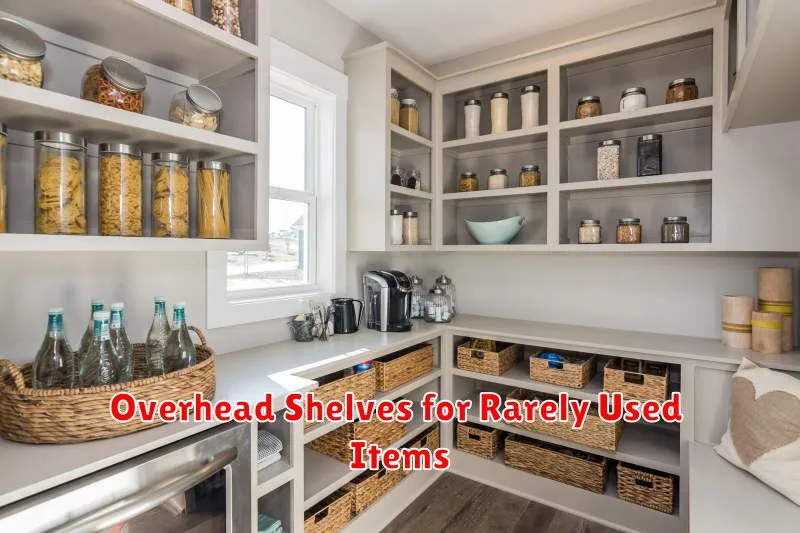
Overhead shelves offer a fantastic solution for maximizing storage space in any room, particularly for items used infrequently. They cleverly utilize often-wasted vertical space, keeping frequently accessed items readily available while tucking away those needed less often.
The benefits are numerous. By moving rarely used items upwards, you free up valuable floor and counter space, creating a more organized and less cluttered environment. This is especially beneficial in smaller spaces where every inch counts. Plus, you can keep seasonal items, holiday decorations, or infrequently used appliances out of sight but still easily accessible when needed.
Installation is relatively straightforward, depending on your chosen shelf type. Many options are available, ranging from simple DIY solutions to more elaborate pre-assembled units. Consider the weight capacity of your chosen shelves and ensure they are securely anchored to the ceiling or wall studs for safety and stability. Proper installation is crucial to prevent accidents.
When selecting shelving, consider materials like wood, metal, or plastic, each offering different aesthetic and durability characteristics. Think about the items you’ll be storing – the weight and size will influence your material and shelf-depth choices. Proper organization is key; consider using clear storage bins or labeled boxes to easily locate items on higher shelves.
Safety should always be a top priority. Ensure that the shelves are securely mounted and use a stepladder or stable stool when accessing items. Avoid overloading the shelves, and be mindful of the weight distribution to maintain stability. Regularly inspect the shelves for any signs of damage or wear and tear.
In conclusion, overhead shelves provide an excellent solution for maximizing space and organizing rarely used items. With careful planning, proper installation, and a focus on safety, you can transform underutilized vertical space into functional and efficient storage, leaving your living area cleaner and more organized.
Clear Labels for Easy Identification
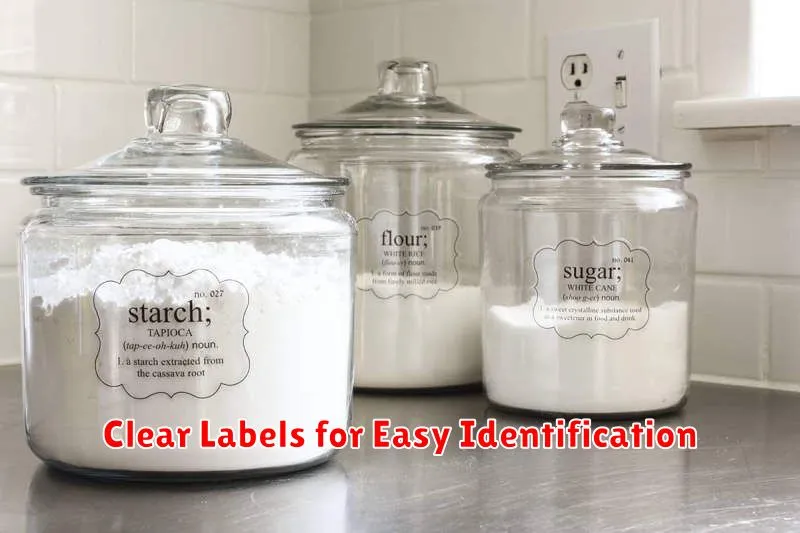
Using clear labels is crucial for effective communication and organization. It ensures that information is easily understood and accessible to everyone.
Consistency in labeling is key. Maintain a uniform style and format across all your labels to avoid confusion. For example, always use title case for headings or maintain a consistent color-coding scheme.
Specificity is also important. Avoid vague or ambiguous terms. Instead of labeling something “Documents,” be more specific, such as “Client Contracts” or “Financial Reports.” This allows for quicker identification and retrieval of information.
The placement of labels should be strategic. Make sure labels are clearly visible and easily readable. Avoid overcrowding labels or placing them in obscure locations.
Consider the audience when choosing labels. Use terminology that is familiar and understandable to your target audience. Technical jargon should be avoided unless it’s appropriate for the specific context.
Finally, regularly review and update your labels. As needs change, outdated or inaccurate labels should be revised to maintain clarity and accuracy.

